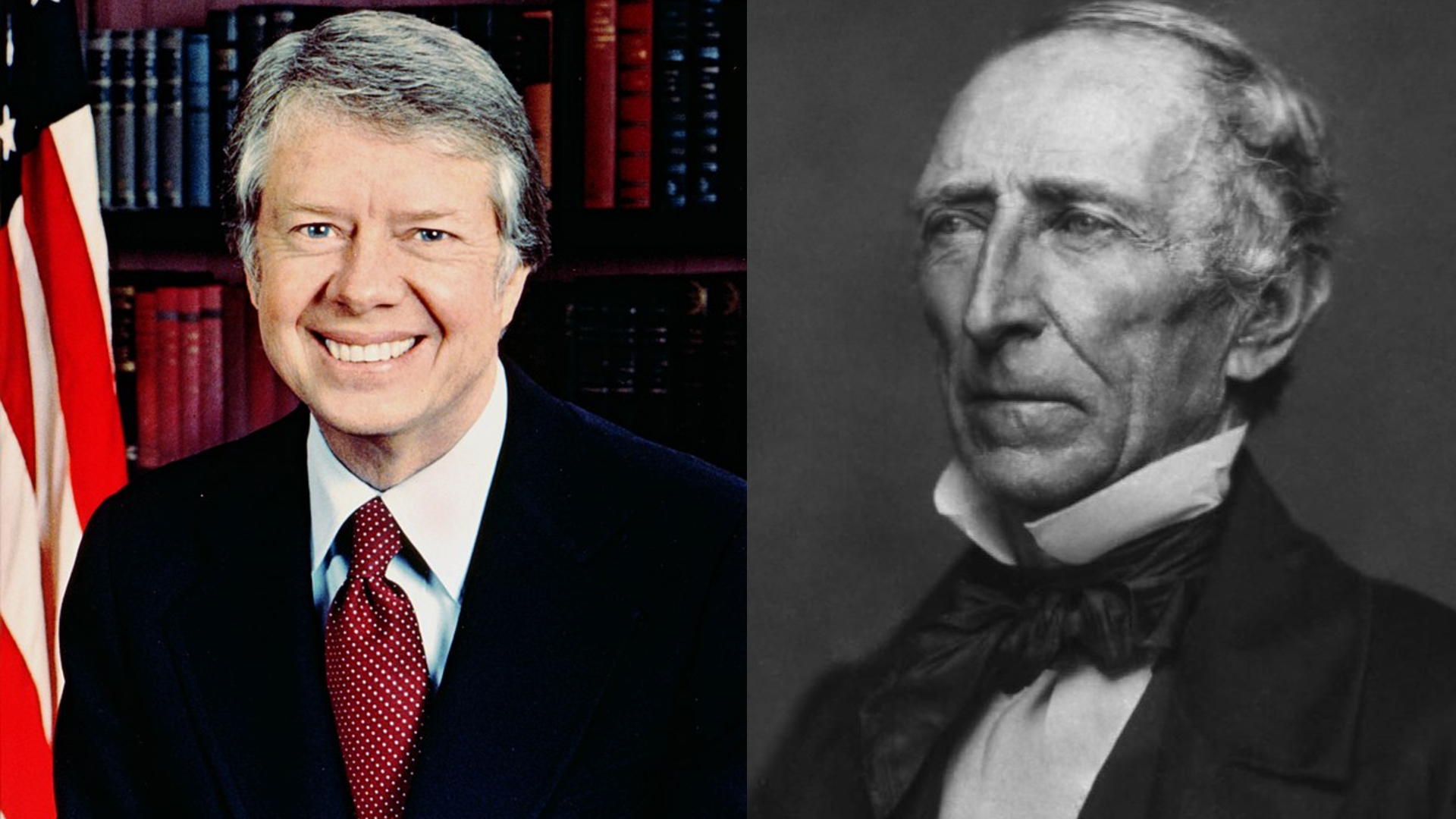Unmasking The True Inventors
Ever used an invention and thought, "Wow, this person is a genius"? It turns out sometimes they’re not the ones who deserve the credit. The history of innovation is filled with twisty tales of mistaken identities and misattributions, where the real genius is often left in the shadows. So, let’s look at 20 inventions that have their names all wrong and find out who the true masterminds are.
 Matthew Yohe (talk) on Wikimedia
Matthew Yohe (talk) on Wikimedia
1. Light Bulb
Though Thomas Edison is often credited with inventing the light bulb, the creation of electric lighting was actually a collaborative effort. In 1802, Sir Humphry Davy demonstrated the first form of electric light through his invention. Edison refined the design, but he wasn’t the sole creator.
2. Radio
Guglielmo Marconi is the face of radio’s invention. However, the truth is that Nikola Tesla made far more impactful contributions to radio technology, including the first radio patent. Marconi, despite his successes, was building on Tesla’s earlier designs.
3. Telephone
Remember Alexander Graham Bell? He’s famously credited with inventing the telephone, but it was Antonio Meucci who first developed the concept and demonstrated it in 1854—years before Bell. Bell patented the invention, overshadowing Meucci’s contributions and leaving his story largely forgotten.
4. Automobile
While Henry Ford made the automobile accessible, it was Karl Benz who truly revolutionized it with the first gas-powered vehicle. In 1885, Benz’s creation, the Benz Patent-Motorwagen, became the first practical automobile, proving that invention takes a backseat to history’s more famous names.
5. Calculator
Texas Instruments often gets the credit for inventing the calculator, thanks to their handheld device in the 1960s. The real number wizard, though, was Blaise Pascal. In the 1600s, he built a gear-powered machine that handled addition and subtraction like clockwork—literally.
6. Telescope
Galileo’s name dominates astronomy books, yet the telescope’s true origin traces back to Hans Lippershey. In 1608, the Dutch spectacle maker applied for a patent after creating a device that magnified distant objects. Galileo later refined the concept and turned it toward the stars.
7. X-Ray
Wilhelm Rontgen is linked to the discovery of X-rays. However, he wasn’t the first to notice the phenomenon. Philipp Lenard had already been experimenting with cathode rays passing through glass. Rontgen took it further, capturing the first X-ray image and coining the term that stuck.
8. Flush Toilet
Think Sir John Harington invented the flush toilet? That’s royal fiction. Long before he impressed Queen Elizabeth I, the Minoans were already flushing like pros in ancient Crete. Their plumbing game was so advanced it would’ve put modern bathrooms to shame—minus the scented candles.
9. Monopoly
Everyone knows Charles Darrow as the genius behind Monopoly, except... he wasn’t. The real mastermind? Elizabeth Magie. She created The Landlord’s Game in 1903 to highlight the dangers of greedy land ownership. Darrow just added hotels, renamed it, and cashed in like a true capitalist.
10. iPod
Steve Jobs made the iPod famous, though the real brains behind the device was Tony Fadell. He had the concept ready and pitched it around before Apple said yes. Jobs delivered the spotlight moment, yet it was Fadell who built the revolution in your pocket.
11. Graphical User Interface (GUI)
Xerox PARC is responsible for creating the first graphical user interface in the 1970s, not Microsoft. Xerox’s Alto computer featured windows, icons, and a mouse—concepts that laid the groundwork for the future of personal computing.
12. Pencil Sharpener
While John Lee Love patented the pencil sharpener in 1897, the idea itself was inspired by earlier designs. The modern handheld pencil sharpener, as we know it, owes its existence to many contributors over time. Still, Love’s patent remains the most notable.
 Michael Coghlan from Adelaide, Australia on Wikimedia
Michael Coghlan from Adelaide, Australia on Wikimedia
13. Helicopter
Most folks salute Igor Sikorsky as the father of the helicopter. Truth is, Paul Cornu beat him to liftoff in 1907 with a twin-rotor contraption in France. Sikorsky made them practical. Cornu proved you could hover before anyone believed it was possible.
14. Super Soaker
Lonnie Johnson is often overshadowed by this toy’s commercial success under Hasbro. Johnson, an engineer, patented the water gun in 1989, but it was Hasbro’s marketing that made it a household name. His engineering brilliance deserves more credit.
15. Air Conditioning Unit
Willis Carrier created the modern air conditioning system in 1902, though many associate the idea with Frederick M. Jones. Jones did make air conditioning portable. Carrier’s system, however, is the one that fundamentally changed how we control indoor climates.
16. Programmable Remote Controllers
Joseph N. Jackson’s 1975 patent for the programmable remote control often gets overlooked in favor of later versions by RCA and other electronics manufacturers. His patent allowed users to control various devices, making his contribution significant despite being overshadowed by bigger names in tech.
17. Elevator
Alexander Miles is credited with inventing the automatic elevator door in 1887, yet he built upon the earlier work of Elisha Otis, who invented the safety mechanism in 1852. Miles’ contribution improved elevator safety, making his efforts pivotal in the final product.
18. Computer Mouse
Most people click on Steve Jobs or Apple when they think of the computer mouse, though the original design came from Douglas Engelbart in the 1960s. His wooden box with wheels looked nothing like today’s slick gadgets. Hence, it changed how humans and machines interact forever.
19. Film Camera
Thomas Edison gets all the credit for movie magic, although Louis Le Prince had cameras rolling first. In the 1880s, he filmed real motion before Hollywood even existed. Then he vanished during a train ride, turning film history into a true-life cliffhanger.
20. Printing Press
Johannes Gutenberg usually steals the show for inventing the printing press. The real plot twist? Chinese inventor Bi Sheng was pressing characters into clay and printing texts 400 years earlier. Movable type had already made its mark in Asia long before Europe joined the publishing party.
KEEP ON READING

1 Weird Fact About Every President
Washington, Lincoln, FDR. Most people know something about the lives…
By Robbie Woods Dec 3, 2024
10 Ancient Civilizations You Don’t Want to Be Trapped In…
Grab Your Time Machine. Trying to pick out an ancient…
By Farva Ivkovic Feb 21, 2025
10 Brilliant Military Tactics That Changed History & 10 That…
That Time Egypt Fought 100 Cats. Sometimes reality is stranger…
By Farva Ivkovic Jan 22, 2025
10 Cool Facts About Machu Picchu & 10 Reasons Why…
Why Do We All Want To See Machu Picchu?. Machu…
By Megan Wickens Oct 23, 2024
10 Facts About Cleopatra And 10 Myths
A Powerful Egyptian Queen. Beyond the critically acclaimed 1963 film…
By Christy Chan Mar 17, 2025
10 Facts About The Real Robin Hood And 10 Myths
The Man, the Myth, the Never-Ending Legend. You’ve seen the…
By Maria Cruz Feb 26, 2025



















